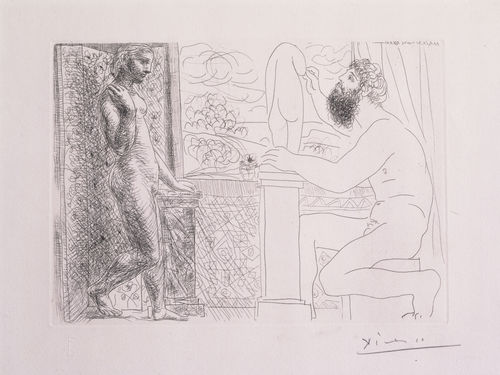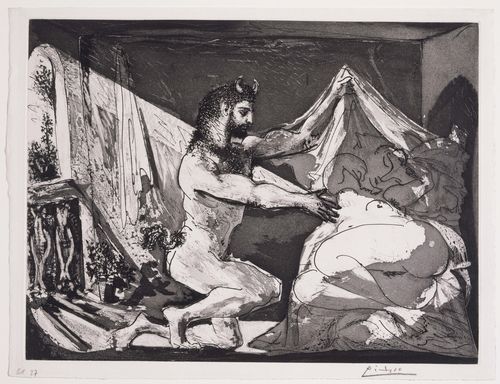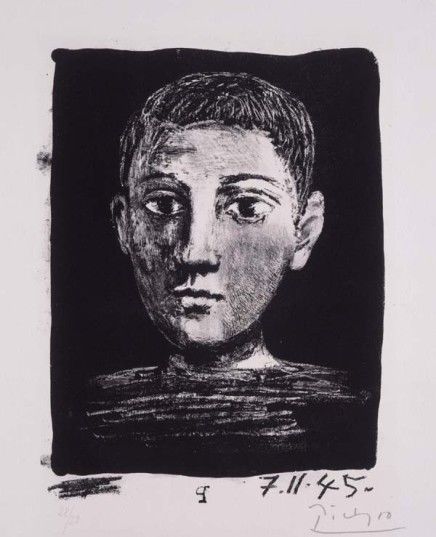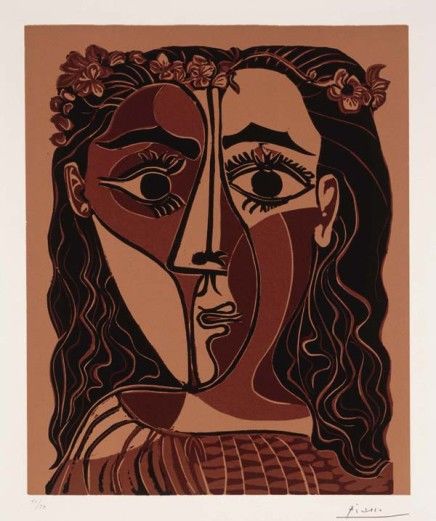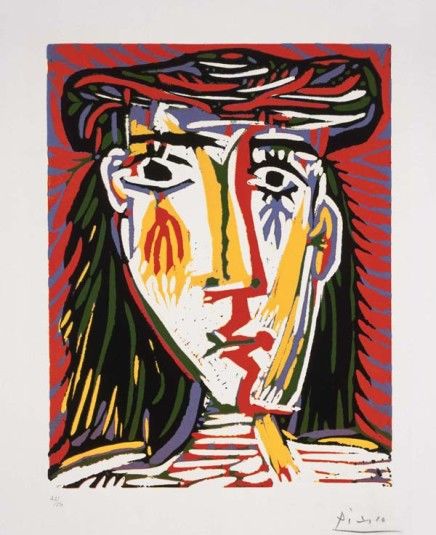
Pablo Picasso
- – This is a past exhibition
Throughout his career, Pablo Picasso (1881-1973) moved between media with agility and inventiveness. In the graphic arts, alone, he created over 2,500 prints and countless drawings. He worked with a range of printmaking techniques including drypoint, etching, aquatint, lithography, and linocut. He never let the technical conventions restrain him, but chose instead to do things that professional printmakers said were impossible. Similar to old master printmakers, Picasso liked to be closely involved in the whole process. He usually collaborated with a professional printer who could offer advice and experience. In another form of collaboration, Picasso also worked with authors and poets to create 134 artist books between 1905 and 1968. Some of his images were direct illustrations of the text while others were more abstractly related to the subject of the book.
One can trace distinct shifts in the style and subject matter of his prints and drawings. Some of his earliest prints, such as Le Repas frugal and Les Saltimbanques, date to his Blue Period, when he focused on circus performers and human vulnerability. In 1909 Picasso began to translate his revolutionary Cubist style into prints. In the 1930s he explored the artist/model relationship in several series including Le chef d'oeuvre inconnu and the ambitious Neo-classical style Vollard Suite. In the 1950s and 60s Picasso began to work in a new print medium – the linocut. This simple technique allowed him to create bold designs in rich, earthy colors.
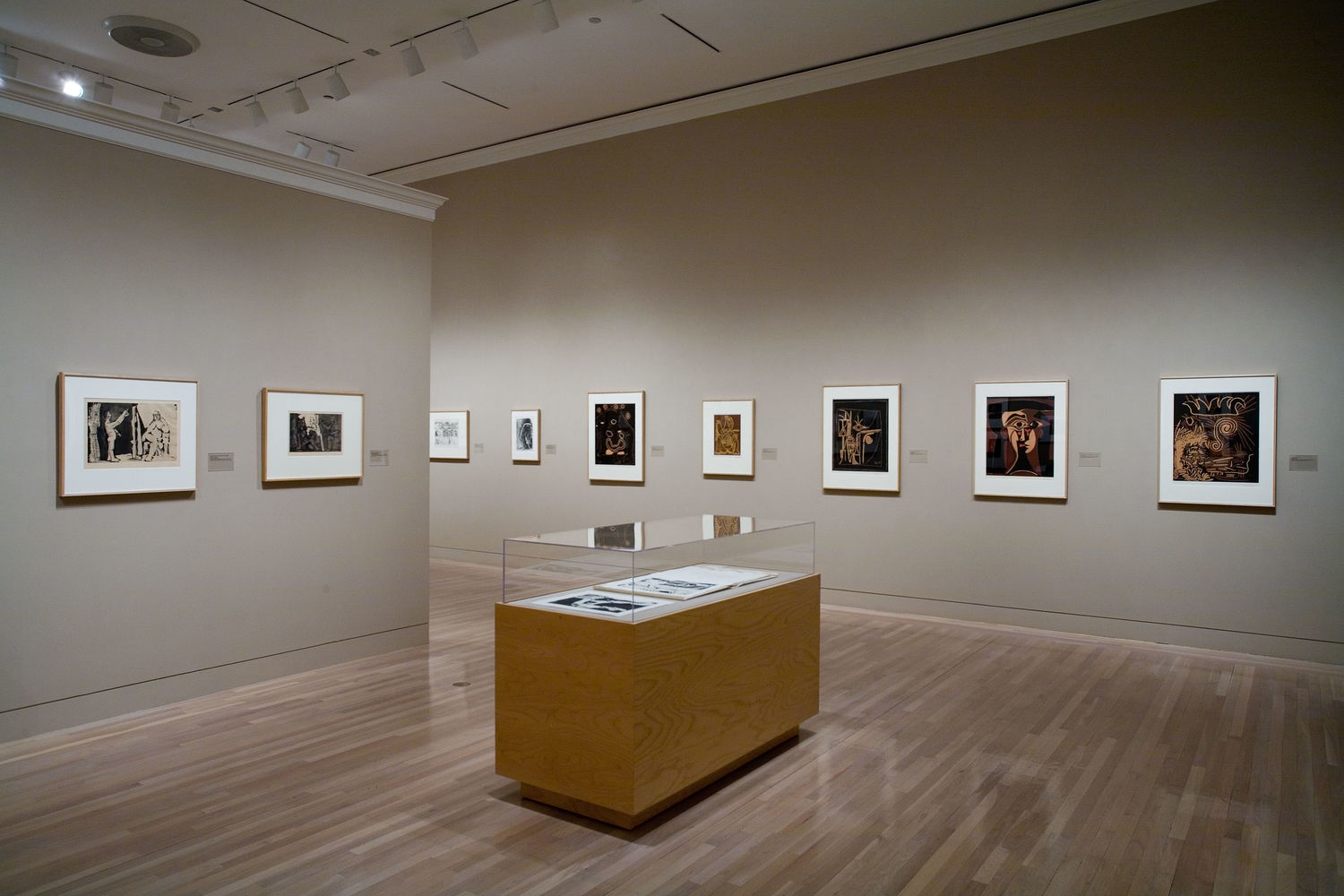
This exhibition celebrates Picasso's remarkable contribution to the graphic arts. It also marks the fiftieth anniversary of the founding of the Grunwald Center for the Graphic Arts. The core of the collection, and the Picasso collection in particular, were given by the Center's founder Fred Grunwald, his wife, and children: Mr. and Mrs. Ernest Grunwald and Mr. and Mrs. Stanley Talpis. We are grateful for their long reaching vision. The Picasso collection at the Grunwald continues to grow even today. We wish to recognize the many donors over the years who have enriched the Center's Picasso holdings including: Rudolf Baumfeld, Professor David T. Cattell, Eunice and Hal David, Mr. and Mrs. Roy Doumani, Mr. and Mrs. Arthur Freed, Norman Granz, Mr. and Mrs. Milton E. Kahl, Barbara Poe Levee, Dr. and Mrs. Sivia Mann, and Mr. and Mrs. Milton R. Stark. We also wish to thank The Judith Rothschild Foundation for generously lending two early, rare prints to this exhibition.
The exhibition is organized by Carolyn Peter, director at the Laband Art Gallery, Loyola Marymount University and former associate curator at the Grunwald Center for the Graphic Arts, Hammer Museum.




